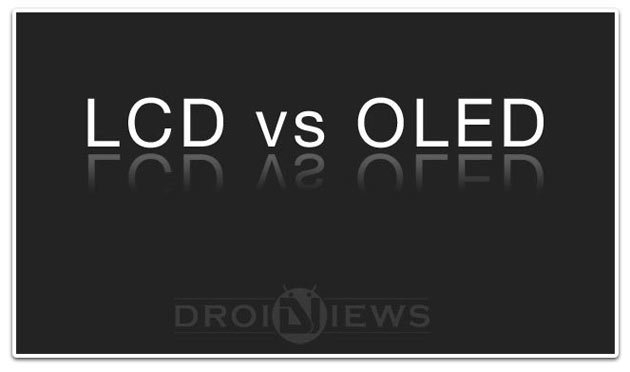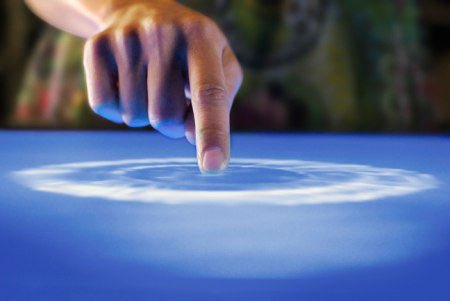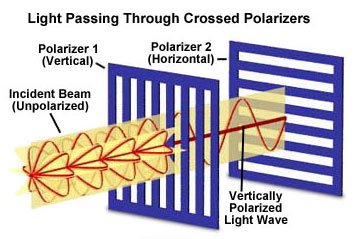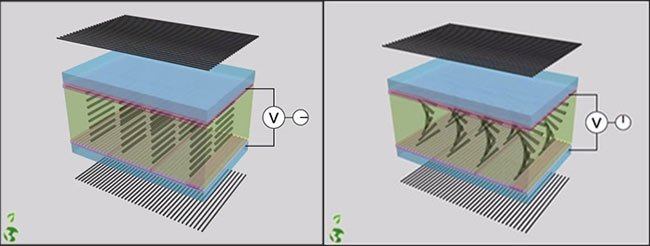
In a market, filled with so many smartphones, it’s not the easiest task to get the best for your money when buying for a new phone. Display is a very important aspect, as we are looking at it all the time. It really makes a difference when you are waiting for a bus in a shiny, bright afternoon or watching a high quality video of majestic nature scenes. We want a display with high pixel density for clear image, as less glare as possible and as bright as it can get for those sunny days, and as vibrant colours for joyable watching experience.
Have you ever wondered what is the difference between LCD and OLED type of screens? What are each pros and cons? Why Samsung is mainly preferring “AMOLED”, whereas HTC swears on LCD type of display? Well, I hope we can work this through and help you choose what kind of display is best for your eyes!
Touchscreen
Since we are talking about smartphones, touchscreen displays are the only option here. Basically we have two, one of which is so old, not even low entry phones feature it – this is resistive touchscreen. The other is capacitive touchscreen.
Resistive touchscreen is made up out of two flexible sheets coated with a resistive material and separated by an air gap. When top layer is pressed by a finger it is being recessed and the two layers are pressed together. The matrix below which consists of striped electrodes, determines where the touch occurred. This type of touchscreen can be handled with gloves which, of course, is a good thing.
A capacitive touchscreen panel consists of an insulator such as glass, coated with a transparent conductor such as indium tin oxide. As human body is also electrical conductor, touching the screen with finger causes changes in electrostatic field, measurable by the sensors (in opposed to some people misinterpreting as being heat sensitive).Because of that it can not be used with non conductive materials such as gloves (all though new technologies have overcome this issue).
When talking about display technology, essentially there are two types for smartphone market. In one corner there is LCD (liquid crystal display) and on the other hand we have OLED (organic light emitting diode) display technology.
LCD
This is the most common type of display in mobile world. We have different types of liquid crystal displays (LCD). From cheap, low budget display technologies with dull colours and poor viewing angles, to high end ones, capable of presenting extremely vivid, natural colours with wide viewing angles. It all comes down to money and effort manufacturers put into the display.
I would say HTC is the master of LCD type of displays. They constantly shock us with better and better displays. I remember when HTC One X came out. It was the best display on mobile device to that date, hands down! It was simply gorgeous. Colours were extremely vivid, viewing angles were incredibly wide, it was (is) bright and outdoor visibility was good too.
You see, there are many factors that come to account when talking about displays. It’s not just the pixels that matter when talking about a quality display. Usually when buying a new phone, if we take a deeper look into phone specs (what we should always do) we get additional info about display. We can stumble upon some fancy abbreviations like: TFT LCD, IPS LCD, S-LCD, SUPER LCD, SUPER LCD 2 etc… Those are all liquid crystal displays. Let’s take a look at each one of them and share a few words.
- TFT LCD: stands for: “thin film transistor liquid crystal display”. Like TFD, it is an active-matrix technology. That means that each pixel has a transistor turning it on and off individually, making it very responsive. It’s cons are poor viewing angles and outdoor visibility under direct sunlight. They ought to consume more power, meaning they are less battery friendly. Because of low manufacturing costs, those are mainly seen on low budget phones to mid range ones.
- IPS LCD: stands for: “in-plane switching LCD”. It’s a big step up from TFT screens. Viewing angles are wider, outdoor visibility is better and it should consumes less power. Production cost is a little higher, that is why we encounter them in high end phones like previously mentioned HTC One X, HTC One, Sony Xperia phones, LG high end phones and so on. Even Iphone uses this type in their “Retina” displays. IPS screens feature 2 transistors per pixel as opposed to the TFT ones that have only one.
- Super LCD(SLCD): Is mostly used by HTC and are made by S-LCD Corporation and some by Sony. It’s suppose to be an advanced version of LCD display. It differs from regular LCD by removed gap between glass and display panel, making better viewing angles, less glare and nicer look (picture appears closer to you, feels more natural and warmer).
- Super LCD2: Is again updated version with minor changes. Manufacturers also like to change names to attract us buyers, even though there weren’t any milestone changes…
LCD: how it’s made and how it works
LCD needs a backlight, because it does not produce light itself. So, the first element is light source of plain white light, evenly distributed across the whole panel. Than, there are two polarised films positioned at a 90 degree angle to each other. Normally, light does not pass through because it is stopped by either of the two polarised panels.
In this case (look picture on the right) we see a beam of unpolarized light (regular stream of light) passing through a vertically polarised film filter (n.1). Aftermath is a nice, vertical light wave. Since there is also a second filter, aligned horizontally, no light can pass through (remember there are only horizontal light waves left and those can not slip through vertical filter). Well, if no light can pass through those two filters, how do we even see an image on our screen?
Well, that is where liquid crystals come in handy. In particular, “nematic phase liquid crystals“. One particular type of those nematic crystals are called TW – “twisted nematics” and they’re physically twisted in neutral state. If we apply a current, they tend to straighten out. Depending on the voltage applied, the degree at which they untwist, varies. Fortunately, this process is very precise and “we” can master it, so it comes applicable for monitor displays.
Those liquid crystals are put between these two polarised panels.
If we take a look at these two pictures, we see polarised filters on top and bottom. In between there are liquid crystals. In the first picture, crystals are aligned – straightened, meaning light will not be able to pass through. After light rays pass the first filter, we get polarised light, but because crystals are straightened, nothing will happen to light, so it’s path will end with second filter which, just to remind, is aligned in respect of 90 degrees to first filter, therefore not allowing any light to pass.
In the second picture though, where crystals are twisted (from top to bottom at exactly 90 degrees), they will “bend” the light, when it will pass through them and turn the light beam for, you guessed it, 90 degrees. Now the light beam is co-aligned with second filter and it can finally escape. Add a colour filter(red, blue or green) before you “cut the light loose” and you have a subpixel! Three of those subpixels, one red one blue and one green, form a pixel. Each subpixel has a transistor that regulates the current which is responsible for alignment of crystals and thus the light passage itself.
To turn the sub-pixel on, no electric charge is required. If we want to turn it off, a charge is released, causing liquid crystals to straighten out – align, and no light can pass. You might ask yourself why isn’t this making LCD screens more power effective if no current is needed for crystals to be twisted, causing light to pass through. Well the problem is with the back panel that is constantly shining no matter how many pixels are actually turned on, which leads us to LCD’s biggest rival and that is OLED display.
Example of a LCD matrix arrangement:
OLED
Organic light emitting diode (OLED) displays on the other hand, do not need a backlight panel, but instead, pixels themselves act as a light source. This type of display has one great advantage over LCD, and that is the way black colour is presented. Unlike LCD screen that needs a whole backlit panel to be lit up (even with “black pixels”), OLED panel simply shuts those black pixels off . That is why OLED displays have those deep blacks and high contrast colour ratio.
But for me, even more important than that true black colour, is the ability of only portion of display to be active at once. That gives to Moto X, for example, the ability (and now other OLED phones) of a “Active display” feature. What that is, is basically a lockscreen that pulses in intervals displaying missed notifications and time. Because of OLED technology only small portion of screen is active thus, power consumption is very low. In an example below, only pixels showing clock and icons are active, while the rest of black screen is inactive. Great for missed notifications with very little power drain.
But there is a downside to OLED displays. They get old with time. Yep, you’ve read it right. It is not something you will notice by day or month, but those OLED pixels are slowly dying one by one. Blue ones are the ones with highest “mortality”.
With OLED displays, the same goes as with LCDs. There are various types and consequently, quality ranges. In this display world, Samsung wears the crown, I’d say. They are also the biggest OLED display manufacturer source.
When looking for OLED displays you will probably come across these abbreviations: OLED, AMOLED, SUPER AMOLED, SUPER AMOLED PLUS. Let’s explain those in a few words
- AMOLED (Active Matrix Organic Light Emitting Diode): Amoled display features an extra semiconducting layer beneath OLED panel, giving the ability of much faster refresh rate (quicker pixel on/off),
- Super AMOLED: Samsung upgraded it’s AMOLED screen type by removing that extra touch-sensitive layer. With Super AMOLED screens, they managed to integrate touch sensor on display panel itself, making it even thinner than before, less power hungry, touch sensitivity is more accurate and viewing angles are even better.
OLED: how it’s made and how it works
Actually, working principle of these displays is a bit more complicated than LCD ones. It involves radiation, delocalization (moving) of pi electrons from highest occupied molecular state to lowest unoccupied molecular state of organic semiconductors and so on, so I didn’t care to dig too deep but it goes something like this;
Two layers of organic matter (where one is emissive layer, while the other is conductive) are put between an anode and cathode. When electric current flows from cathode to anode, electrons are pushed from emissive layer down to conductive layer, and those from conductive layer, to anode. Because conductive layer released electrons, it now has more protons (positively charged particles) than electrons, so there are “electron holes” left to be filled. When those holes combine with extra electrons gained from current, some extra energy is released in a form of light. Light is nothing more than electromagnetic radiation, afterall.
We all know there is balance in chemistry, physics. If there is one proton, there should also be one electron (hydrogen), where there are 8 protons (and neutrons ofc), there shall be 8 electrons. With that being said, we should get a rough idea (I am not a chemist myself either), how electrons jump from cathode to anode to form that symmetry, balance. Again, this is a rough idea. For more accurate and in-depth explanations, please follow links given below.
This is how AMOLED screen looks like under microscope. It is a Nexus One RGBG Pentile Matrix example. It is called PenTile Matrix. It uses a pattern of: RGBG (red, green, blue, green).
New Samsung’s flagships possess this kind of matrix because as said above, OLED displays tend to image burn. What that essentially means is that pixels die – get burned. To check if your phones has some, you can use testers from Google Play, which fill the entire screen with red, blue and green colour (immersive mode – full screen). You can also apply white through entire screen to see if there are any burns. It is common for it to happen on areas that are persistent, such as “status bar” on top or navigation bar on the bottom. If we apply a white colour through entire screen and still see a grayish shadow where status bar usually is, that means you have a screen burn. People who text a lot have said that even keyboard can be faintly visible.
Well, here is an example. We have a Samsung Galaxy S2 and a screen burn is visible. LCD screen pixels burn as well, to be clear, it’s just its lifespan is much longer.
Below we have 3 different display matrixes. First is from Galaxy Note 3, which uses PentileMatrix where there are double as much green subpixels as there are red and blue (they do it because blue ones are the ones that get burned easiest). Samsung used new arrangement with this one, as seen from the picture, subpixels are diamondly shaped. Secondly we have LCD display from HTC One X and lastly again AMOLED display from Nexus One. Not all AMOLED screens have Pentile Matrix arrangement. Super Amoled from Galaxy S2 for example uses standard RGB configuration.
Overall comparison: LCD vs OLED
Now, that we know how both types of displays work and that there are different versions on both sides, we should take a look at overall pluses and minuses.
Basically in terms of picture quality both can be fairly equally good. Both, Samsung Note’s Super AMOLED display and HTC One’s Super LCD 2 are a joy to watch (I am just using those as example phones through the article, which doesn’t mean Sony, LG or any other manufacturer has any worse displays). You’ll get a crisp looking picture, with good colour presentation and bright display for outdoor visibility. Differences are not astronomical.
We must compare display types in the same price range, comparing high end LCD with entry level AMOLED display is pointless and vice versa.
But anyways, OLED:
- should use less power,
- viewing angles should be wider,
- refresh rate is supposedly faster,
- contrast should better, due to deeper blacks and,
- outdoor visibility should be better.
- pixels tend to die faster,
- colours can be over saturated for some people’s taste.
On the other hand,
- LCD displays are better at presenting white colour (the one from OLED is grayish/yellowish),
- colours are more “natural”, not as saturated (sometimes oversaturated) as with Super AMOLED screens,
- Super LCD display should be brighter than Super AMOLED ones (not always the case),
- less prone to pixel burn,
- blacks are not really black.
Conclusion
While manufacturers are constantly improving their screens, it is sometimes hard to follow the track which one is better. In the end it all comes down to personal preferences. Some like vibrant colours that AMOLED is able to deliver, for others it feels over saturated and prefer more natural colours LCD is famous for. Again some like deeper blacks while others browse on internet a lot and prefer whiter whites.
Above, you have a short explanation for both display technologies about how they work and general cons and pros (remember, screens vary from phone to phone so it’s sometimes hard to generalize).
Me for one, I loved HTC’s natural colours but those blacks on Note are gorgeous as well. I would have a hard time choosing a winner in terms of image quality, but the fact that AMOLED screen is giving me ability of “Active display”, I choose this one.
What about you? Which one do you prefer? Which one suits your needs? Would you still buy a phone even if it didn’t feature your display type or it doesn’t matter that much when buying a new phone? Please let me know in comments below.


Really useful article, thanks!
I’m pretty sure the reason Samsung uses an RGBG system isn’t to handle dead pixels, but because the human eye is most sensitive to the color green. BTW, PenTile is also used in LCDs, but it’s RGBW (white/clear).
I’ve checked and you are right, i’ve seen that on Wiki. But that only makes it two reasons for that. Because as stated above, blue sub-pixels are the ones with the biggest risk of burning out.
Quote from Joel Pollack, an Executive VP at Nouvoyance (Samsung’s company that developed the PenTile matrix scheme): “An OLED display is made from colored (RGB) sub pixels. A blue OLED has the lowest luminous efficiency (lower then red and green) and so needs to be driven at higher current – which means a lower lifetime.”
But thanks for pointing out, i’ve missed that one. We learn every day, afterall… 🙂
I’ve checked and you are right. That is also a reason, but still, I would say the primarily it is because of blue pixels shortest lifespan (higher chances to burn out).
Quote from Joel Pollack, an Executive VP at Nouvoyance (Samsung’s company that developed the PenTile matrix scheme): “An OLED display is made from colored (RGB) sub pixels. A blue OLED has the lowest luminous efficiency (lower then red and green) and so needs to be driven at higher current – which means a lower lifetime.”
Thanks for pointing out though, I didn’t know about that. We learn everyday, after all… 🙂